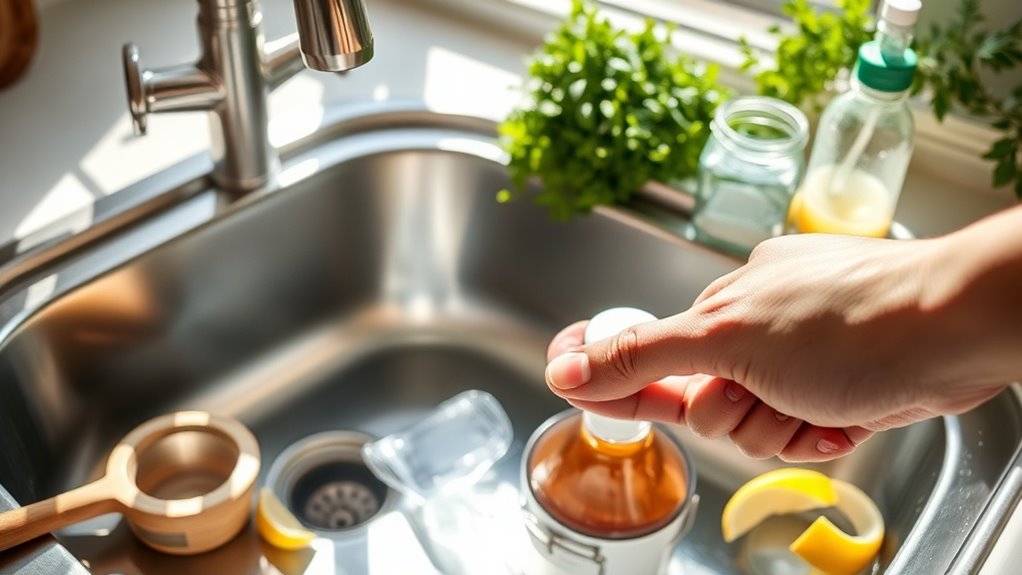How to Unclog a Sink Without Harsh Chemicals
When your sink gets clogged, reaching for harsh chemicals isn’t your only option. You can effectively resolve the issue with simple, natural methods that avoid damaging your pipes. Techniques like boiling water, baking soda and vinegar, and even the plunger can clear those stubborn blockages. Let’s explore these methods in detail to ensure you have the right tools for a quick and eco-friendly solution.
Boiling Water Method
The boiling water method is a straightforward and effective way to tackle minor clogs in your sink.
Start by boiling a kettle of water.
Once it’s reached a rolling boil, carefully pour it directly down the drain.
This can help dissolve grease and debris, allowing you to unclog sink naturally. Additionally, using safe ingredients like hot water can promote healthier waterways.
Repeat the process if necessary for stubborn clogs.
Baking Soda and Vinegar
If boiling water hasn’t completely cleared the clog, baking soda and vinegar can be a powerful duo for tackling stubborn sink blockages.
Start by pouring half a cup of baking soda down the drain, followed by half a cup of vinegar.
Allow the mixture to fizz for 15-30 minutes, then flush with hot water.
This reaction helps dissolve debris and improve drainage, making it an effective method for odor neutralization and maintaining a fresh sink environment.
Salt and Baking Soda Combination
A simple yet effective method for unclogging a sink involves a combination of salt and baking soda.
Start by pouring half a cup of baking soda down the drain, followed by half a cup of salt.
Let it sit for about 30 minutes to break down debris.
Then, flush with hot water to clear the mixture and any loosened clog.
Dish Soap Solution
After trying the salt and baking soda method, you might find that grease buildup is still causing issues.
In that case, pour a generous amount of dish soap down the drain. Follow with hot water to help break down the grease. Baking soda can also effectively unclog drains and eliminate odors.
Let it sit for about 15 minutes before running more hot water through. This method effectively reduces clogs without harsh chemicals.
Plunger Technique
When you’re ready to tackle a stubborn sink clog, the plunger technique can really help you break through the blockage.
First, ensure the sink contains enough water to cover the plunger’s rubber rim.
Position the plunger over the drain, creating a tight seal.
Push down forcefully, then pull up sharply.
Repeat this motion several times until the water drains freely. Regular maintenance like using strainers can help prevent clogging in the first place.
Manual Removal of Clogs
Sometimes, manual removal of clogs is the most effective method for clearing your sink.
You can quickly access and eliminate blockages by following these steps:
- Remove the drain cover to inspect for debris.
- Use a wire hanger or plumber’s snake to dislodge the clog.
- Flush with hot water to clear remaining waste.
This hands-on approach minimizes reliance on chemicals and ensures a thorough clean. Additionally, regular maintenance can prevent severe blockages and save you from expensive repairs.

